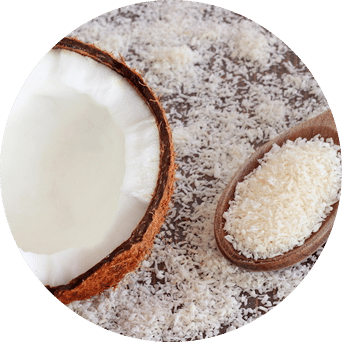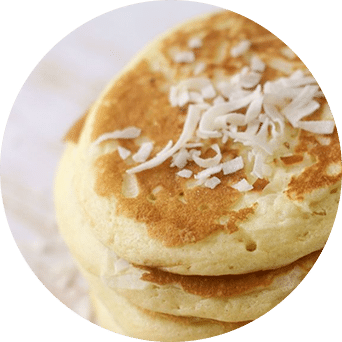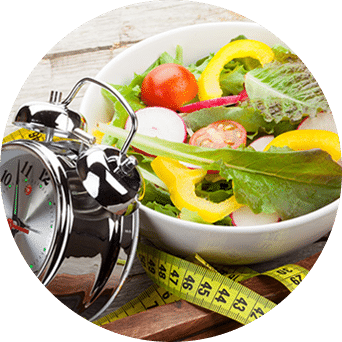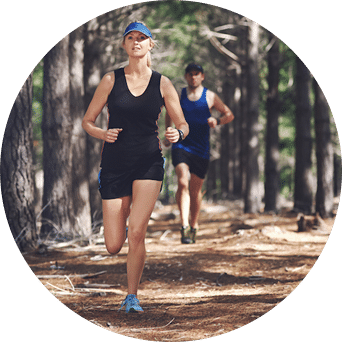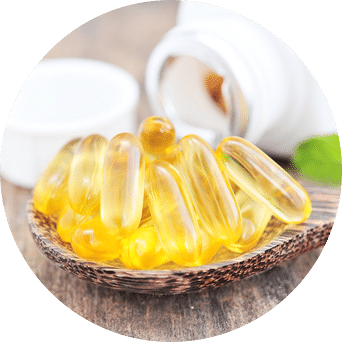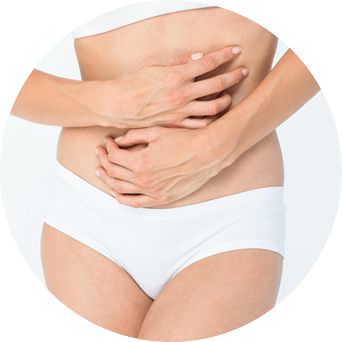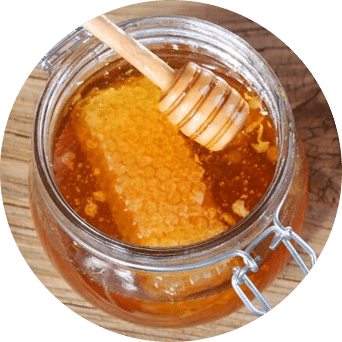
Welcome to Paleohacks! We’re glad to have you aboard the biggest Paleo community on the web. Our goal is to help make your transition to Paleo as easy as possible. Here you’ll find information and answers on all things related to the Paleo lifestyle.
[shared_counts]What exactly IS Paleo?
We believe Paleo is one of the healthiest ways to eat on the planet. It’s based around avoiding processed foods, gluten, grains, soy, dairy, and legumes, and eating real, unprocessed foods.
It’s more than just a diet, though — it’s a smart, adaptive, evolutionary approach that can improve any aspect of your health. It can help you lose weight, improve athletic performance, improve sleep quality and mood, reduce inflammation & arthritis, address autoimmune conditions, mental health problems & depression , and even reduce your risk of heart disease, cancer, and diabetes.
Click here to discover more about the benefits of Paleo.
Which Foods Are Paleo Friendly, and Which Foods Should I Avoid?
Find out in our Complete Paleo Diet Food List here.
Is [Blank] Paleo?
Dairy
Dairy is a controversial topic in the Paleo community. Technically speaking, if you’re strictly following the Paleo diet, dairy shouldn’t be consumed, as evidence shows that our ancestors didn’t have it after being breast-fed as infants. Some types of dairy, like raw and fermented, are much better for you than others. For more on the Dairy debate,
check out this post from our blog.
Soy
Although mainstream nutrition claims that soy is basically a superfood, it does not fit into the Paleo paradigm. Not only do they contain the anti-nutrients that other legumes contain, like lectins and phytic acid, but are also frequently genetically modified. GMO soy has been linked to health problems like allergies, birth defects, and fertility issues. Beyond that, soy can also disrupt hormone levels and thyroid function. This is all to say that we do NOT recommend including soy in your diet.
You can learn more about our take on soy here.
Gluten / Grains
Gluten is a protein found in many grains that makes them chewy and stretchy — it’s also used in many processed foods as a thickening agent. Our bodies are not designed to digest Gluten, and because of this, it can cause various issues like inflammation, leaky gut, brain fog, and more. Gluten and similar grains are NOT included in the Paleo Diet.
Learn more about gluten here.
Legumes
Legumes are a category of food that includes foods such as lentils, peas, chickpeas, peanuts, and soybeans. On a strictly Paleo diet, legumes are to be avoided — just like dairy and grains. However, there is some gray area for those who don’t have trouble digesting them. They can be eaten if properly prepared, but it’s generally a good idea to leave them out of your regular diet as they don’t provide much nutrition and could cause problems.
Learn more about legumes here.
Anti-Nutrients
Anti-Nutrients are natural or synthetic compounds that interfere with the absorption of nutrients. They’re present in things like grains and beans, but also in green leafy vegetables like kale, spinach, and chard. It’s generally advisable to avoid or eliminate anti-nutrients in food through proper cooking methods.
Learn more about anti-nutrients here.
Alcohol
Alcohol is a staple in global culture and isn’t going anywhere anytime soon. You can maintain proper health while consuming a few drinks a week socially; however, alcohol has many downsides, especially if you have the specific goal of losing weight.
Check out this podcast for more on Alcohol as it relates to weight loss.
Coffee
Coffee has tons of health benefits, including assisting in burning fat, decreasing risk of diabetes, alzheimer’s, parkinson’s, cancer, and depression, and includes a significant amount of antioxidants. However, the flip side of coffee is that it also increases your level of cortisol (the stress hormone) and puts stress on your adrenal glands. It’s accepted on the Paleo Diet (Bulletproof Coffee is very popular in the Paleo community) but should be consumed with some discretion. More on coffee here. If you’re looking to get “off” coffee — check out these 11 coffee alternatives here.
Chocolate
We’ve got great news — Chocolate is good for you. However, to get the most nutrition and health benefits, it has to be 70% or higher cacao dark chocolate. This type of dark chocolate is high in Iron, Magnesium, Copper, Manganese, Potassium, and Zinc, along with tons of antioxidants. This type of chocolate can help improve brain function, lower blood pressure, lower the risk of stroke, and a lot more. That doesn’t mean we recommend stuffing your face with it 24/7 — it’s best to eat in moderation. Learn more about the benefits of dark chocolate here.
Salt
Salt — the right kind of salt — is good for you, and an essential nutrient. We recommend you choose sea salts or Himalayan pink salts, which naturally contain greater concentrations of essential trace minerals. More on salt — and how much to include in your diet — here.
Sugar
One of the most overeaten pieces of the American diet, Sugar is a food that is minimized on Paleo. We recommend that as much as you can, stay away from the refined sugar that’s found in most consumer food products. The sugar from fruits is acceptable – you should be weary of your fructose intake. Reducing sugar intake is often a tough transition for those adopting the Paleo diet, as sugar interacts with your brain the same way addictive drugs do. Learn more about sugar addiction here, 6 ways to beat sugar cravings and fructose here.
Fat
Fats are a main energy source for the body and a vital part of the Paleo Diet. Consuming quality fats daily is critical for brain function, healthy skin and hair, immune function, healthy digestion, body temperature regulation, and aiding in the absorption of fat-soluble vitamins A, D, E, and K. Discover the facts about fat in our 3 part series here, here, and here.
Carbohydrates
While Paleo tends to lean towards being low-carb, it is not strictly a low-carb diet. Paleo includes many starchy, high-carb foods, including sweet potatoes, squash, and yams. Some argue that eating even these Paleo-friendly foods can be harmful by increasing your insulin resistance, while others advocate eating a moderate amount of starches to boost your mood, physical performance, and energy levels. We think that carbs definitely have a place in a Paleo diet — with the amount depending on your activity level — you can find out the full story on starches here. And learn more about how to manipulate your carb intake for fat loss here.
Protein
Protein is like a secret weapon when it comes to weight loss and another vital element of the Paleo Diet. Protein reduces your appetite and hunger levels, helps increase muscle mass, improve bone health, reduce cravings, lower blood pressure, and it speeds up your metabolism, making your body a more efficient weight-loss machine. Figure out what your ideal protein intake should be here.
Cholesterol
Cholesterol, along with Saturated Fat, has been one of the most demonized parts of the american diet — being held responsible for heart disease, cancer, and other health problems. However, it has been found that cholesterol is actually good for you — and should be included in your diet. To learn more about cholesterol & how much you should eat click here. To see the top 5 myths of cholesterol dispelled, click here.
Nuts & Seeds
Nuts are a great source of healthy fats and antioxidants, making them a popular food for preventing heart disease and cancer. They’re popular amongst Paleo enthusiasts, although be wary of the anti-nutrients in many types of nuts. And be wary of eating too many! A handful is usually plenty for one serving. Check out our list of the best and worst nuts here. And learn 20 things you probably didn’t know about nuts here.
Food Additives
Food additives are everywhere. The FDA has a list of over 3,000 food additives that are used in american foods. Most of them you’ll want to avoid as much as possible, but there are some that are considered safe. Check out our Definitive Guide to Food Additives here.
Doesn’t not eating all those foods get boring?
You might think so, but as it turns out, there are a ton of delicious Paleo recipes out there!
You can see our full Paleo Recipe Archive here or you can search through our Paleo Recipe Category here.
Is Paleo another fad diet?
Most definitely not.
Fad diets often are focused solely on extreme results in a short amount of time. And although Paleo can lead to quick weight loss, Paleo is more of a lifestyle adjustment involving permanently changing our eating habits with the goal of improving our overall health.
The mainstream will always look for some kind of labeling when a large amount of people adopt something new; it’s usually done to cover up for their own insecurities or lack of will to make a change in their own life. In fact, you may encounter some social pressure to NOT eat Paleo — even if you’re getting great results from it. You can find our solutions to handle that kind of social pressure here.
Understand that this is a lifelong choice to remove foods that the human body is not meant to eat. The result? Feeling and looking better than ever before.
Is Paleo Hard?
We’re not going to lie to you and tell you that transitioning to Paleo for the first time isn’t a challenge — because it definitely is. You may encounter social and family pressure to not change the way you eat. You may go through a ‘detox’ phase as you eliminate foods that your body and brain are likely addicted to.
But you CAN do it, and the results from changing your diet will make any challenges you face worth it.
If you are having trouble breaking some of your old habits,
here’s some of our best tips to create new habits (like eating Paleo foods!).
What should I expect on Paleo?
Like we mentioned before, transitioning to Paleo isn’t always easy. You’re going to experience a few roadblocks in many forms. You’ll have cravings, you’ll initially feel a bit tired, and you’ll come across negative social pressure and/or criticism. It’s important to stay focused and realize these things as they happen during your first 30 days.
Here’s some of our best “getting started” resources for Paleo:
- The 21 Day Paleo Meal Plan – This will give you meals for your first 3 weeks, so you won’t struggle to figure out what to eat.
- The Paleo Diet Shopping List – Here’s our printable shopping list that will help you navigate through the grocery store on your next trip.
- Your first 48 hours on Paleo — Our quick guide to the immediate transition into Paleo – and how to overcome any initial challenges.
- 10 Ways To Eat Healthy On A Budget + The Ultimate Guide To Eating Paleo On A Budget – These are two of our best resources to help you save money while eating Paleo.
- How To Stay Paleo On The Road – You don’t have to just stay at home all day to eat Paleo successfully – there are tons of ways to stay Paleo while traveling – and this is our best resource to show you how to do that.
- The Complete Paleo Diet Food List – In case there’s any confusion, here’s our complete list of Paleo foods to eat and avoid.
- How To Stay Paleo At Restaurants – Our guide to on how to avoid getting “glutened” and how to stay Paleo when you eat out.
- 8 Useful Tips For Easy Paleo Meals
- 15 Essential Tools Every Paleo Kitchen Needs – This will show you the essential kitchen items that you’ll need to get cooking delicious Paleo meals.
I’m going to miss some of my favorite foods…
Look – we understand the concern. When you switch to Paleo, a lot of your favorite meals are now off the “safe” list.
…Or are they? Turns out, there is a “Paleo-friendly” version of almost everything you loved to eat pre-Paleo. And that’s good news — because it means you can eat some of your favorite treats — just don’t go overboard:
For our more information on Paleo Substitutions, check out these posts:
Your Guide To Paleo Substitutes
The Complete Guide To Cooking Oils
25 Ways To Make Paleo Bread
Potato Substitutes
Your Guide To Paleo Condiments
Almond Flour: What You Need to Know About This Grain-Free Substitute
6 Easy Egg Substitutes for Every Situation
Your Favorite Foods — “Paleofied”
Paleo Cereal Recipe
Paleo Breadcrumbs
Chocolate Paleo Donuts
Paleo Ramen
Paleo Cornbread
Paleo Apple Pie
Paleo French Toast
Paleo Twix Bar
Paleo Cinnamon Rolls
No Nut Nutella
Dairy Free Pesto
Paleo Cheesecake
Paleo Sandwich Bread
Bacon Wrapped Brussels Sprouts
Paleo Chocolate Almond Butter Brownies
Coconut Flour Bread Recipe
Coconut Flour Pancakes
Paleo Waffles
Coconut Milk Ice Cream
Almond Flour Pancakes
Coconut Flour Biscuit
Coconut Flour Banana Bread
Paleo Funnel Cake Dippers
Paleo Crispy Chicken and Waffles
Paleo Sweet Potato Lasagna
Paleo New England Clam Chowder
One Pan Paleo Jerky Nachos
Paleo Dark Chocolate Lava Cake
Paleo ‘Peanut’ Butter Truffles
No Bake Paleo Peppermint Chocolate Cheesecake
Coconut Flour Gingerbread Cookies
Coconut Flour Paleo Pie Crust
Paleo Snickers Bars
Dreamy Fluffy Pancake Recipe
Coconut Flour Strawberry Shortcake
Dairy-Free Ice Cream Sandwich Recipe
Strawberry Chocolate Donuts
I have a more specific Paleo or health related question.
Great news! We have an entire Q&A community dedicated to getting your questions answered. Here you can connect with other Paleo users, share your progress, learn new tips and tricks, get past any sticking points, and pass along knowledge that’s helped you on your Paleo journey.
You can search for the answer to your question here, and if you can’t find the answer, register here to ask your first question.
“Advanced” Paleo-Related Concepts
Intermittent Fasting
Intermittent fasting is an eating pattern that involves fasting anywhere from 16 to 24 hours — something that our ancestors often did out of necessity. Noted health benefits from Intermittent Fasting include increased production of growth hormone, increased insulin sensitivity, reduce inflammation, assist in the prevention of cancer, and helps you burn more body fat. We are proponents of it — though it isn’t for everyone! Learn more about the different methods of Intermittent Fasting here. If you’re an audio learner, Listen to our podcast with Brad Pilon all about intermittent fasting here.
Ketosis
Ketosis is the state your body goes into when you have elevated levels of ketones in your body. In this state, your body essentially uses fat as a source of energy instead of glycogen. There is one way to get into ketosis, and that’s to eat a low-carb (and high fat) or “ketogenic” diet. These diets are made up of, generally, less than 50g of carbohydrates, with the remaining food coming from a mix of fat and protein. An obvious pro here is the fat loss, and there have also been additional medical benefits found. Like intermittent fasting, though, it’s not for everyone. Learn more about including a ketogenic diet in Paleo here. To learn about the pros and cons of ketosis, click here.
Cheat Days
While “Cheat Days” should be minimized, you should figure out what works best for your unique situation to keep you motivated and on course with eating Paleo. For example, If you struggle with food cravings or have an addictive personality, cheating all day can make it harder to get back on the wagon. One cheat day becomes a day and a half, then two. And it might not stop until you’ve fallen back into bad habits. Learn more about “healthy” cheat days here.
Embracing The Paleo Lifestyle
Paleo is more than just foods to eat and avoid — it also includes making sure that the products in our life, our home, and our environment, are the most natural & non-toxic they can be. This includes skincare & cosmetic products, home cleaning products, shampoos, and more. Here are some of our best articles on being Paleo outside of the kitchen:
Green Living
4 Ways to Reduce Waste At Home
How to Cool or Heat Your House Naturally
The Ultimate Guide to Natural Home Cleaning
5 Hacks To Stay Paleo At Home
How To Compost
Paleo Cosmetics, Skincare, & Anti-Aging
The Ultimate Guide to Natural Skincare
Oil Cleansing for Perfect Skin
The Ultimate Guide to Natural Haircare
3 DIY Facemasks
2 DIY Makeup Removers Better Than Commercial Brands
6 Paleo-Friendly Skincare Tips
10 Ways To Slow Aging Naturally
9 Foods For Perfect, Glowing Skin
Advanced Glycation End Products: The Root Of Inflammation, Disease, And Aging
7 Foods to Help Clear Away Adult Acne
3 Everyday Foods That Age Your Skin Faster
What Happens to Your Skin When You Use Coconut Oil Every Day
7 Rosehip Oil Benefits for Amazing Skin
Technology
The Effects Of TV On Your Brain
How To Live Paleo In A Digital Age
5 Reasons You Need To Unplug
Reducing Stress / Meditation
How to Meditate and Stick With It In 5 Simple Steps
How Stress Affects Your Health And 5 Tips To Handle It
5 Yoga Poses To De-Stress
How To Do A 5 Minute Stress Busting Workout
The Best 10 Minute Meditation
How To Reduce Stress With Mindfulness Meditation
Adaptogens: Natural Stress-Busting Herbs
Deep Breathing: The Most Powerful Health Hack
How Do I Exercise On Paleo?
Exercise & Movement is a key part of Paleo. We love walking, sprinting, bodyweight workouts, and even though our cavemen ancestors weren’t really lifting dumbbells and kettlebells, we love those too.
For everything on exercise and movement, check out our movement 101 series here.
Do I need supplements on Paleo?
Once you’re eating whole, nutritious, Paleo foods and exercising regularly, supplements can be useful in getting you the extra nutrition that may be lacking in your Diet. Modern agricultural methods have stripped a lot of the nutrients from our soil, so it’s smart to incorporate a few supplements like Vitamin D, Magnesium, and Fish Oil to make up for any shortcomings in your diet.
Check out our list of recommended Paleo Protein Powders supplements on the Paleo Diet depending on your need.
I have a specific condition or issue, or topic I want to find out more information on:
Gut Health & Improving Digestion
7 Signs Your Gut Bacteria Are Out of Whack
The Ultimate Guide to Probiotics
The Definitive Guide to Fermented Foods
The Truth About Candida
The Ultimate Guide to Perfect Digestion
5 Ways To Nurture Your Gut At Home
4 Paleo Foods To Avoid If You Struggle With Digestive Issues
5 Ways To Improve Your Digestion Naturally
8 Fantastic Foods That Heal Your Gut
8 Amazing Gut Healing Supplements
Is Your Gut Making You Sick?
A Simple Guide to the Best Kombucha
Leaky Gut: Fact Or Fiction?
Fodmaps & IBS: What You Need To Know
3 Steps To Perfect Gut Health w/ Jillian Teta
How Your Gut Affects Your Happiness ( & 7 Ways To Heal It)
The 9 Best Probiotic Foods That Aren’t Yogurt
The 5 Best Supplements for Leaky Gut
20 Reasons You’re Bloated (And How to Get a Flat Belly)
Depression & Mental Health
The Different Types of Depression and How to Start Healing
5 Ways a Paleo Diet Can Help Depression
How to Conquer Depression Without Drugs w/ Kyle Davies
The Effects Of Food On Your Brain
The Effects Of Exercise On Your Brain
Diet & Mental Health: What You Need To Know
25 Reasons To Be More Positive
How To Grow New Brain Cells
13 Tips to Maximize Brain Power
Thyroid Conditions
The Ultimate Guide to Thyroid Health
3 Ways to Heal Your Thyroid Naturally
11 Foods That Affect Your Thyroid Health
Should You Avoid Kale If You’re Hypothyroid?
7 Ways Stress Wrecks Your Thyroid
Hormonal Imbalances & Adrenal Fatigue
Is Cortisol Your Worst Enemy?
5 Signs You’re Leptin Resistant (And Why It Matters)
Are You Suffering From Adrenal Dysfunction?
4 Dietary Pitfalls that Lower Your Testosterone Levels
6 Hormones That Completely Change Your Weight & Health
Adrenal Fatigue Signs & Symptoms
Adrenal Fatigue: Supplements & Testing
8 Signs You Have a Hormonal Imbalance (and How to Fix It)
Signs of Estrogen Dominance & 5 Ways to Decrease Symptoms
Women’s Health & Fertility
12 Of The Best Foods & Herbs To Boost Fertility
7 Foods & Herbs That Heal PMS
All About Women’s Health w/ Samantha Gladish
Is It Okay to Stay Paleo While Pregnant?
Sarah Fragoso on Everyday Paleo: Being a Badass Mom & Women’s Health
6 Natural Ways to Rescue You From Menstrual Cramps
Your Guide to Better Bra Health
6 Exercises for Back Pain During Pregnancy
7 Safe Pregnancy Exercises for Every Trimester
Do’s and Don’ts: Prenatal Workout Safety for the First Trimester
4 Ways to Exercise During Pregnancy for Mom & Baby
Sleep
4 Tips For Better, More Satisfying Sleep
How To Get Better Sleep
5 Little Known Factors Ruining Your Sleep
Why You Should Sit Less & Sleep More
8 Tips for Better, More Effective Sleep
9 Ways to Naturally Relieve Insomnia
The 10-Minute Yoga Routine For Perfect Sleep
The Dangers of Sleeping on a Bad Mattress (and How to Pick the Best Mattress)
Autoimmune Conditions
Detoxification
8 Herbs That Detox Your Body Naturally
3 Ways To Detox Your Body Naturally
7 Amazing Foods that Cleanse Your Liver Naturally
Daily Detox: The Benefits of Dry Skin Brushing
The 3 Most Insidious Toxins You Ingest on a Regular Basis
The Top 10 Natural Detox Foods
Superfoods
13 Superfood Anti-Aging Sea Vegetables
8 Foods You Probably Didn’t Know Were Superfoods
The “Original” Paleo Superfoods
The Ultimate Guide To Superfoods
The Definitive Guide To Fermented Foods
7 Amazing Benefits of Maca
5 Paleo Super Herbs You Should Be Eating
Chlorella: What It Is & Health Benefits
7 Natural Aloe Vera Health Benefits
Natural Remedies
How to Cure a Toothache Naturally
How to Cure a UTI (Without Going to the Pharmacy)
How to Prevent Motion Sickness Naturally
21 Natural, Easy Ways to Prevent Hair Loss
7 Constipation Causes You CAN’T Ignore (and 6 Natural Remedies)
14 Common Causes of Bad Breath (and How to Freshen Up)
Teeth Whitening: 10 Easy, Natural Ways to Brighten Your Smile
All-Natural Ways To Exfoliate Skin
Aloe Vera Ice Cubes for Soothing Sunburn Relief
8 Natural Sunburn Remedies
7 Natural Sore Throat Remedies
6 Natural Hangover Cures That Work
Body Image, Emotional Eating & Self Love
How To Love Yourself
How To Overcome Body Image Issues
How To Be Sexy By Nature w/ Stefani Ruper
Overeating: Why We Do It And How to Stop
How To Stop Cravings In Their Tracks
6 Ways To Beat Sugar Cravings For Good
6 Paleo Snacks To Fight Those Cravings
Specific Vitamins & Minerals
Why You Need More Magnesium
Are You Getting Enough Zinc?
What Are Trace Minerals And Are They Important?
Why You Need Niacin
Why You Need Vitamin A
Vitamin E: The Facts You Need To Know
The Ultimate Guide To Vitamin D
Sunlight: The Ultimate Health Hack
Vitamin B12: More Important Than You Realize
Are You Vitamin D Deficient?
Vitamin C: Facts & Myths
Vitamin K2: The Powerful Nutrient Missing From Your Diet
Why You need Fulvic Acid In Your Supplement Cabinet
Zinc, The Serious Health Punch Missing From Your Diet
Other Paleo Foods & Items That We Love
Coconut Oil
30 Uses for Coconut Oil
Coconut Oil: Background & Uses
Coconut Oil Fudge & Coconut Oil Honey Butter
Benefits of Ghee vs Coconut Oil
Turmeric
37 Ways to Drink Turmeric
40 Turmeric Recipes, The Ultimate Paleo Spice
Golden Turmeric Latte
Roasted Turmeric Cauliflower
3 Delicious Recipes Using Turmeric
Apple Cider Vinegar
Apple Cider Vinegar Part 1
Apple Cider Vinegar Part 2
Bone Broth
The Health Benefits of Bone Broth (And How To Make Your Own!)
55 Cozy Bone Broth Recipes
Gut-Healing Bone Broth Recipe
Essential Oils
Honey
2 Surprising Things You Can Do With Honey
8 Natural Benefits of Cinnamon And Honey
Last updated: 11/22/2016
[shared_counts]





